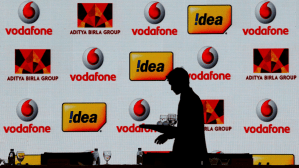We analyse the recently released FY14 financials of the Indian subsidiaries of the global auto majors. Since all these MNC subsidiaries are unlisted, their data come with a lag. The biggest players among these MNCs by market share in the Indian market, from the largest to the smallest, are Hyundai, Honda, Toyota, Ford, General Motors, Volkswagen and Nissan. Of these, the smaller companies—Nissan and Volkswagen—export a large proportion of their local production (>60%); hence we only consider the five biggest MNCs (Hyundai, Toyota, Honda, Ford and GM). These five together have a 35% market share in the Indian passenger vehicle industry. Combined with the three Indian majors (Maruti, Mahindra and Tata Motors), the eight auto OEMs (original equipment manufacturers) together command a 95% market share in the Indian PV (passenger vehicle) space.
The past few years have been tough for the auto industry with the market having three straight years of subdued growth/decline. Moreover, Maruti, Honda and Hyundai are the only companies to have gained material market share in the last two years, while all other companies saw either flattish or declining market shares. Toyota, VW and GM (the three biggest OEMs in the world) have all had market share loss over the past two years, along with the big market share loss for the other two India-based OEMs, Tata Motors and M&M.




So, domestic volumes for all of these companies fell in the period. Most OEMs anyway have plans to make India an export hub; some of those plans got accelerated with the sharp currency depreciation. While Hyundai (40%) and Nissan (70%) were already exporting a large portion, others such as Ford, Toyota and VW saw large increases in the share of exports. This helped the companies improve their utilisation levels, and profitability.
With the exception of Honda, profitability for the rest in FY14 was stagnant or declined; in contrast, Maruti saw a 200 basis point margin expansion. Hyundai is the only company with profitability close to Maruti and its margins were stable last year. This is a bit surprising given that Hyundai India exports 40% of its production and should have gained significantly from the INR depreciation.
Barring Hyundai, the rest were just about at break-even or loss-making even at the Ebitda level. Honda’s profits were severely impacted in FY12 and FY13 with margins falling to negative 20% as it was impacted by issues like the yen appreciation, calamities in Thailand (floods) and Japan (nuclear accident). it saw a big improvement in FY14, but still had negative Ebitda margins. GM saw its profit margins contract, followed by smaller declines for Toyota and Ford.
Mirroring the Ebitda, Hyundai was the only one with healthy operating cash flows followed by Toyota. The rest all had negative operating cash flows. Free cash flow was negative for them.
Honda and Ford are the two companies in the middle of increasing capacity—Honda with the new Rajasthan plant and Ford with the new Gujarat plant. Consequently, the capex intensity of these was the highest. Hyundai has comparatively old capacity. This, combined with the fact that the company is operating at near full utilisation, resulted in the highest net fixed asset turnover for Hyundai, even higher than Maruti.
Another weak year: We notice that for the top MNCs in India FY14 was another weak year as the market remained muted and all the large companies barring Honda and Hyundai lost market share. With the exception of Hyundai, all other companies were just about breaking even or loss-making even at the Ebitda level. Honda’s profits improved from FY13’s depressed levels. GM saw a big decline in profits and return ratios followed by smaller declines for Ford and Toyota.
Currency movements largely beneficial: Both the INR and the JPY depreciated significantly during the year and these currency movements were largely beneficial for the Indian auto industry. Companies such as Maruti (300 bp) and Honda (800 bp) saw gross margin expansion on the back of the JPY depreciation.
Maruti’s margins higher than Hyundai’s: Hyundai is the only one with profitability close to Maruti and has been operating at near full capacity as it has not expanded its capacity significantly for some time, resulting in lower fixed costs. Royalty payments for Hyundai India were also 300 bp lower than Maruti’s. Despite this, Maruti’s margins averaged over 100 bp higher than Hyundai’s, primarily on 500 bp higher gross margins due to higher volume scale, in house production and superior localisation. This is a key advantage for the company which competition will take time to replicate, in our view.
—Credit Suisse



















